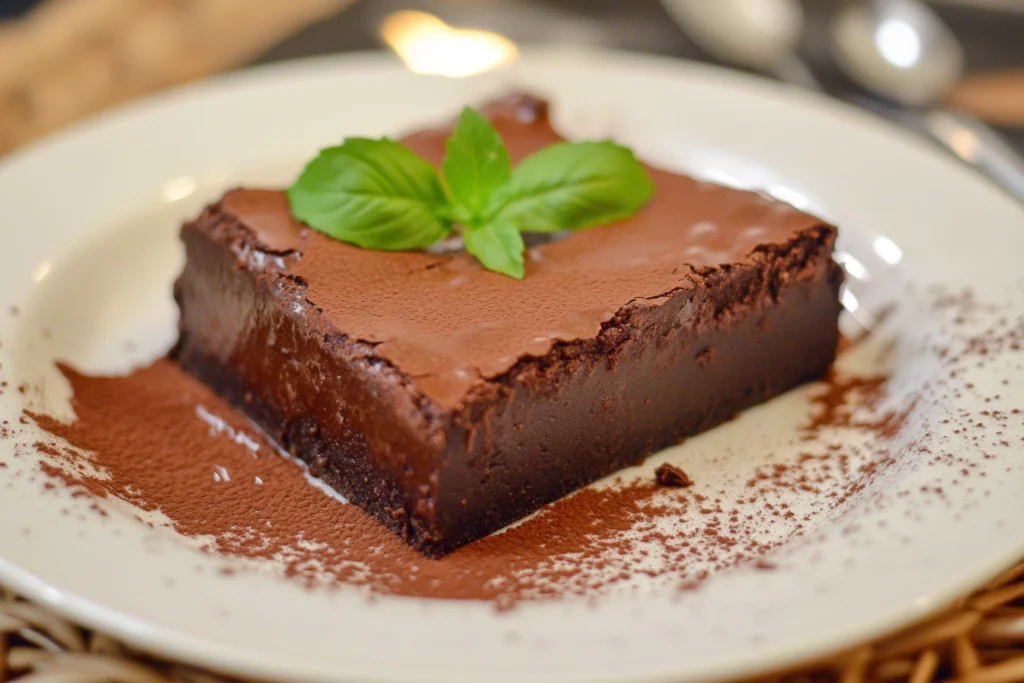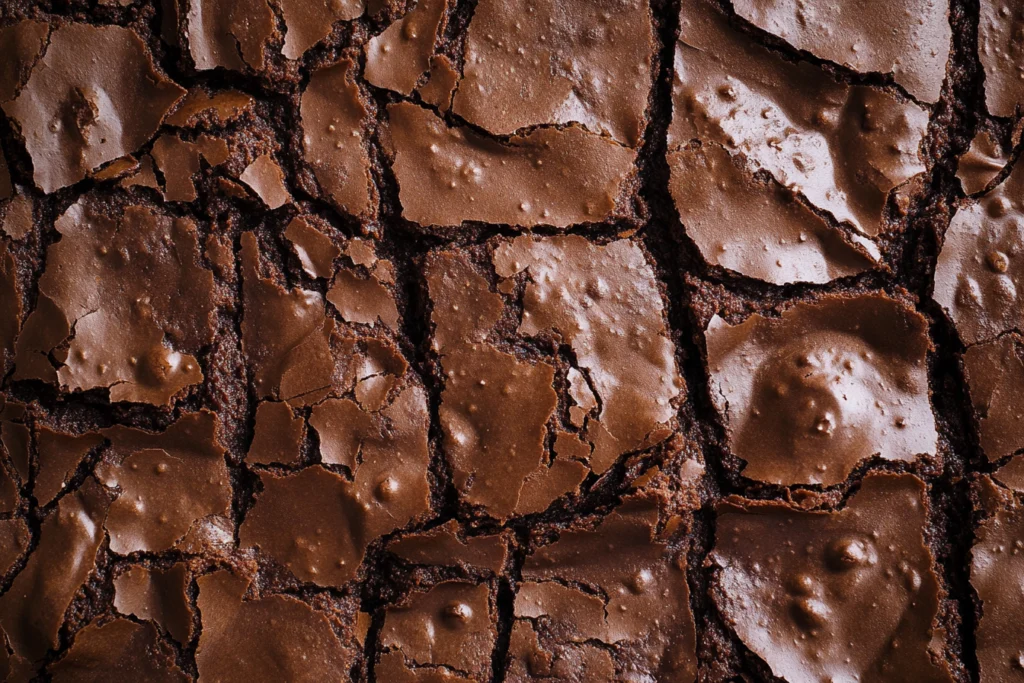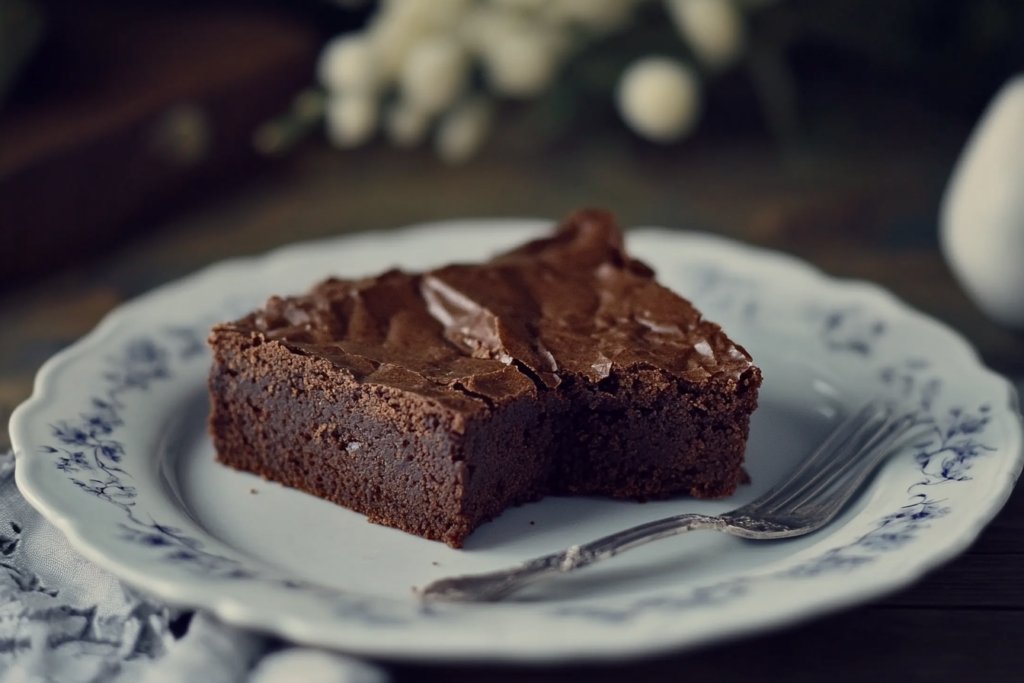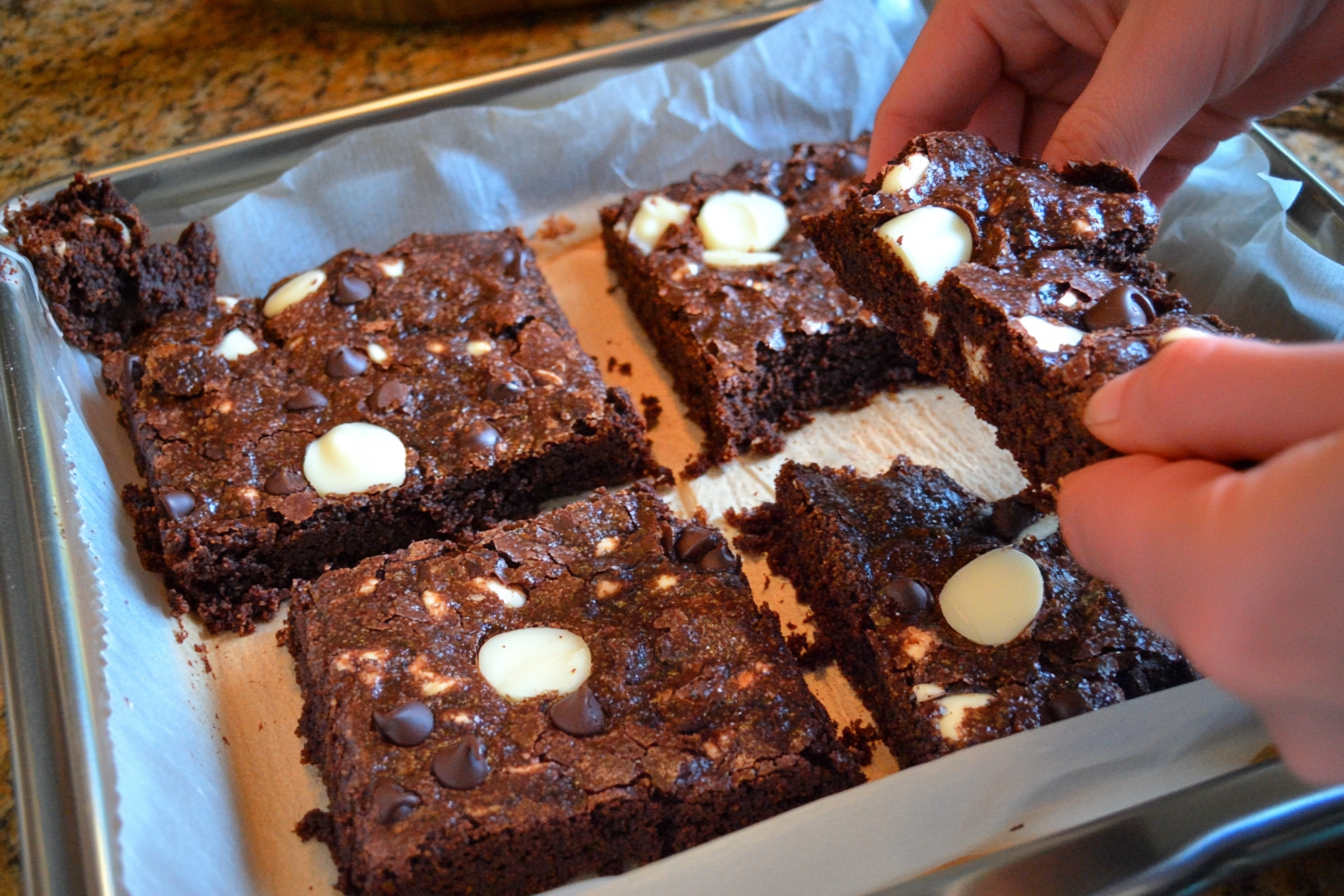Understanding Chocolate Brownies
Chocolate brownies, a timeless dessert, have captured the hearts of dessert enthusiasts across the globe. With their indulgent flavor, rich texture, and versatility, brownies are a perfect treat for nearly any occasion. Whether enjoyed warm with a scoop of ice cream or as a simple snack, chocolate brownies are a beloved classic.
But what makes a brownie stand out? From the crisp top to the fudgy or cakey interior, this dessert can take on many forms, making it uniquely adaptable to different tastes. In this guide, we will explore the history, ingredients, and variations of this cherished dessert.
History of Chocolate Brownies

The origins of chocolate brownies date back to the late 19th century. There are several stories about their invention, but one of the most popular involves a housewife in Bangor, Maine, who forgot to add baking powder to her chocolate cake. Rather than discarding the dense cake, she served it, and the brownie was born.
As the recipe evolved, brownies became a staple in American households, celebrated for their simplicity and versatility. By the early 20th century, recipes for brownies appeared in cookbooks, solidifying their place in culinary history. Over time, variations like fudge brownies, blondies, and nut-filled brownies emerged, appealing to a wide array of palates.
Key Ingredients in Chocolate Brownies
At their core, chocolate brownies rely on a few simple yet essential ingredients:
- Chocolate: Provides the rich flavor that defines brownies. Variations like cocoa powder or melted chocolate create subtle differences in texture and taste.
- Butter: Adds moisture and richness.
- Sugar: Sweetens the batter and contributes to the chewy texture.
- Eggs: Bind the ingredients and contribute to the batter’s structure.
- Flour: Adds stability; the amount determines whether brownies are cakey or fudgy.
Optional ingredients like nuts, vanilla extract, or chocolate chips allow for customization, giving each brownie a unique twist.
Texture and Flavor Profile of Chocolate Brownies
The balance of ingredients heavily influences a brownie’s texture and flavor:
- A higher ratio of butter and chocolate results in fudgier brownies.
- Using more flour and eggs leads to cakier brownies.
- Adding cocoa powder instead of melted chocolate creates a drier texture with an intense chocolate flavor.
These variations allow bakers to cater to diverse preferences, ensuring there’s a brownie for everyone.
Varieties of Chocolate Brownies
Brownies come in numerous forms, offering something for every dessert lover. Some popular types include:
- Classic Chocolate Brownies: The traditional recipe with a balance of moistness and structure.
- Fudge Brownies: Known for their dense, rich texture.
- Blondies: Made without chocolate,
often featuring flavors like butterscotch or vanilla instead.
Regular Chocolate Brownies vs. Fudge Chocolate Brownies
While both types share core ingredients, their differences lie in texture and richness. Regular brownies strike a balance between cakey and chewy, offering a light yet indulgent bite. Fudge brownies, on the other hand, lean heavily on chocolate and butter for a denser, richer experience. These distinctions often guide personal preferences, making each variety uniquely appealing.
Baking Techniques for Brownies
The techniques used during preparation significantly influence the final product. Key considerations include:
- Mixing Methods: Overmixing can result in tough brownies, while gentle mixing preserves the desired texture.
- Baking Temperature: Lower temperatures create a moist center, while higher temperatures yield a firmer texture.
- Parchment Paper Lining: Ensures easy removal and prevents sticking.
Mastering these techniques ensures consistent, crowd-pleasing results.
Culinary Importance of Brownies
Brownies hold a special place in the world of desserts due to their:
- Versatility: Enjoyed as a standalone treat or paired with toppings like ice cream or whipped cream.
- Ease of Preparation: Ideal for both beginner and experienced bakers.
- Cultural Impact: A universal favorite with variations found worldwide.

Popular Pairings with Chocolate Brownies
Chocolate brownies pair wonderfully with:
- Ice Cream: The cold creaminess contrasts beautifully with the warm, rich brownie.
- Whipped Cream: Adds a light, airy texture.
- Fresh Berries: Provides a tangy complement to the chocolate.
- Nuts or Caramel Sauce: Enhance the flavors with crunch and sweetness.
Common Misconceptions About Brownies
Many people misunderstand the nuances between different brownie types. For example:
- Brownie vs. Cake: While they share ingredients, brownies lack the leavening agents that give cakes their fluffiness.
- Cakey vs. Fudgy Brownies: The difference lies in the ratio of fat to flour, not in the baking time alone.
- Blondies Are Not Brownies: Despite similarities, blondies are their own dessert, featuring caramel and butterscotch flavors.
Part 2: Chocolate Fudge Brownies: A Closer Look
What Makes a Brownie a Chocolate Fudge Brownie?
Chocolate fudge brownies stand out for their dense, chewy texture and intense chocolate flavor. Unlike regular brownies, they minimize flour and rely on a higher proportion of butter, sugar, and chocolate. The result is a rich, almost candy-like interior that melts in your mouth.
This distinction makes fudge brownies ideal for those seeking a truly indulgent dessert. Their consistency can vary from slightly gooey to firm, depending on the recipe and baking techniques used.
Key Differences Between Regular and Fudge Brownies
The main differences between regular brownies and fudge brownies lie in:
- Ingredients: Fudge brownies use more chocolate and butter, while regular brownies often have more flour for structure.
- Texture: Regular brownies can range from cakey to chewy, while fudge brownies are always densely packed with a moist crumb.
- Taste: Fudge brownies deliver a richer, more chocolate-forward flavor.
These contrasts make fudge brownies particularly appealing to chocolate lovers, as their formulation prioritizes bold flavor over airy texture.
Fudge-Like Consistency Explained
The fudge-like consistency of these brownies is achieved through a combination of:
- High Fat Content: Butter and chocolate contribute to the moistness and density.
- Limited Flour: Minimizing flour prevents the batter from becoming too structured.
- Eggs: These act as a binder without adding excessive lift, ensuring a compact texture.
Understanding this science helps bakers perfect their brownies every time.
Ingredients Unique to Fudge Brownies
Several ingredients play a pivotal role in creating the signature texture of fudge brownies:
- High-Quality Chocolate: Often melted, this forms the base of the batter.
- Brown Sugar: Adds moisture and enhances the depth of flavor.
- Espresso Powder (optional): Intensifies the chocolate taste without being overpowering.
- Cream or Sour Cream: Occasionally used for extra richness.
By carefully balancing these ingredients, bakers can craft the ultimate chocolate fudge brownies.
Importance of Chocolate Ratios
The amount and type of chocolate used can dramatically impact the outcome:
- Bittersweet Chocolate: Offers a rich, less sweet flavor.
- Semisweet Chocolate: Balances sweetness and cocoa intensity.
- Unsweetened Chocolate: Provides a strong chocolate foundation, often paired with additional sugar.
The ideal ratio depends on personal taste, but most fudge brownies prioritize chocolate as the star ingredient.
Baking Techniques for Fudge Brownies
Achieving the perfect fudge brownie requires attention to detail:
- Mixing: Overmixing can introduce too much air, leading to a lighter texture. Gentle folding preserves density.
- Baking Time: Slight underbaking ensures a gooey center, while overbaking can result in dryness.
- Cooling: Allowing brownies to cool fully before cutting prevents them from falling apart.
Role of Baking Temperature and Time
Temperature and time are critical factors in creating fudge brownies:
- Baking at a lower temperature (e.g., 325°F) allows for even cooking, maintaining a soft interior.
- Shorter baking times preserve the gooey texture, especially at the center.
Keeping a close eye on your brownies as they bake ensures you capture the desired consistency.
Common Variations of Fudge Brownies
Fudge brownies offer endless opportunities for creativity. Popular variations include:
- Nut Additions: Walnuts, pecans, or almonds provide a satisfying crunch.
- Swirls: Adding cream cheese, peanut butter, or caramel for visual and flavor contrast.
- Flavored Extracts: Mint or orange extracts create unique taste profiles.
- Toppings: Drizzling with ganache or sprinkling sea salt adds flair and sophistication.
These enhancements allow bakers to tailor their brownies to specific preferences or occasions.
Healthier Alternatives for Fudge Brownies
For those seeking a lighter option, substitutions can be made:
- Greek Yogurt or Applesauce: Replace part of the butter for reduced fat content.
- Coconut Sugar or Stevia: Swap out traditional sugar for a lower glycemic index.
- Almond Flour: Use as a gluten-free alternative to traditional flour.
- Dark Chocolate: Choose varieties with a higher cocoa percentage for antioxidant benefits.
While these adjustments may alter the texture slightly, they still deliver a satisfying treat.
Fudge Brownies Around the World
Chocolate fudge brownies have made their way into global cuisine, with each culture adding its unique spin:
- Japan: Often features matcha or red bean paste for a distinctive twist.
- France: Focuses on ultra-rich chocolate with minimal sugar.
- India: Incorporates spices like cardamom or chili for a bold flavor.
- Latin America: Adds dulce de leche or cajeta for a caramel infusion.
These regional adaptations highlight the universal appeal of fudge brownies while celebrating local tastes.
Part 3: Comparing Chocolate Brownies and Fudge Brownies

Texture Showdown: Regular vs. Fudge
The most defining feature of brownies is their texture, and this is where regular and fudge brownies diverge significantly:
- Regular Brownies: Often strike a balance between cakey and chewy. Their structure is more aerated, providing a lighter bite. This makes them a versatile choice for those who prefer a dessert that’s less rich but still indulgent.
- Fudge Brownies: Dense and moist, they almost resemble chocolate truffles in their richness. This texture comes from a higher concentration of butter and chocolate, with less reliance on flour and leavening agents.
For many dessert enthusiasts, choosing between these two types depends on the occasion and personal preference. Regular brownies often pair better with toppings or layers, while fudge brownies shine as a standalone treat.
Flavor Comparisons
When it comes to flavor, both types of brownies deliver a chocolatey punch, but in different ways:
- Regular Brownies: Balance sweetness and chocolate flavor. They often rely on cocoa powder, which provides a robust chocolate taste with a drier finish.
- Fudge Brownies: Feature a richer, creamier flavor profile due to the use of melted chocolate and sometimes a touch of espresso powder to enhance the chocolate depth.
The use of higher-quality chocolate in fudge brownies can elevate their taste, making them the go-to choice for those who crave an intense chocolate experience.
Caloric and Nutritional Differences
While both types of brownies are indulgent, their nutritional profiles differ:
- Regular Brownies: Tend to have fewer calories per serving due to lower fat content. They might include slightly more flour, reducing the caloric density.
- Fudge Brownies: Higher in calories and fat because of the increased butter and chocolate. They are, however, more satisfying in smaller portions, which may help with moderation.
For those mindful of nutrition, opting for smaller servings or experimenting with healthier ingredients can make both varieties a better fit for a balanced diet.
Popular Uses of Regular and Fudge Brownies
Both regular and fudge brownies are versatile, lending themselves to various uses:
- Regular Brownies:
- Layered in trifle desserts for texture variety.
- Topped with frosting or ganache for a festive look.
- Used as a base for brownie sundaes.
- Fudge Brownies:
- Served as a decadent standalone dessert.
- Cut into smaller squares for party platters.
- Paired with red wine or coffee for an elevated treat.
These serving styles reflect the adaptability and universal appeal of brownies, ensuring their place in every dessert lover’s repertoire.
Adaptability in Recipes
Both types of brownies accommodate various mix-ins, but certain ingredients suit each type better:
- Regular Brownies: Work well with airy additions like marshmallows or fruit.
- Fudge Brownies: Pair better with dense mix-ins such as caramel swirls, peanut butter, or chunks of dark chocolate.
Choosing the right add-ins can amplify the brownies’ flavor and texture, making each batch a unique culinary experiment.
Storage and Shelf Life
Proper storage is key to maintaining the freshness and quality of brownies:
- Regular Brownies:
- Can last up to a week at room temperature if stored in an airtight container.
- Refrigeration helps extend their shelf life but may make them slightly drier.
- Fudge Brownies:
- Best stored in the refrigerator due to their higher fat content, which can make them prone to spoilage.
- Can be frozen for up to three months without losing texture or flavor.
These guidelines ensure that brownies remain as delicious as the day they were baked.
Audience Preferences
Different audiences often lean towards one type of brownie over the other:
- Kids and Teens: Regular brownies, often with added toppings like sprinkles or candies, are a hit.
- Adults: Fudge brownies, with their sophisticated richness, appeal to more mature palates.
- Health-Conscious Individuals: Regular brownies with healthier modifications tend to be more appealing.
Understanding these preferences can help bakers cater to diverse tastes and occasions.
Regular and Fudge Brownie FAQs
1. Can I make regular brownies fudgier?
Yes! Reduce the amount of flour and increase the butter and chocolate in the recipe.
2. What makes brownies cakey?
Using more eggs and flour while incorporating a leavening agent like baking powder creates a cakier texture.
3. How do I know when brownies are done?
For regular brownies, a toothpick should come out clean. For fudge brownies, it should have moist crumbs but no wet batter.
4. Can I freeze brownies?
Yes, both types freeze well when wrapped tightly to prevent freezer burn.
5. Why did my brownies turn out too dry?
Overbaking is the most common culprit. Adjust the baking time based on your oven and desired texture.
6. Can I use cocoa powder instead of melted chocolate?
Yes, but the texture and flavor will differ. Cocoa powder creates a drier, more intense chocolate flavor.
7. What’s the best way to cut brownies cleanly?
Use a serrated knife, and wipe it clean between cuts for the best results.
8. Are brownies gluten-free?
Traditional recipes use flour, but gluten-free options are available using almond or coconut flour.
9. What type of chocolate is best for brownies?
High-quality bittersweet or semisweet chocolate works best for a rich flavor.
10. How can I make brownies healthier?
Substitute butter with Greek yogurt, use less sugar, and opt for dark chocolate to reduce fat and sugar content.
Related Article : Can I use coconut oil when making brownies?

